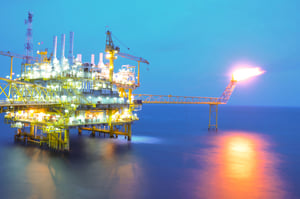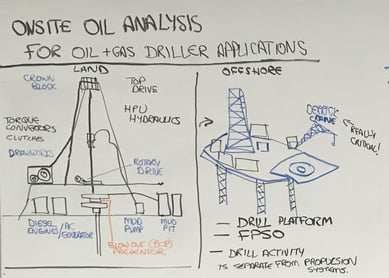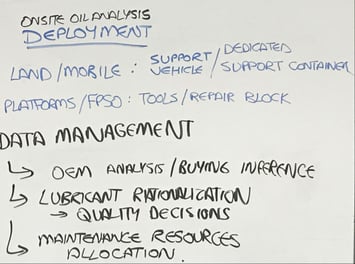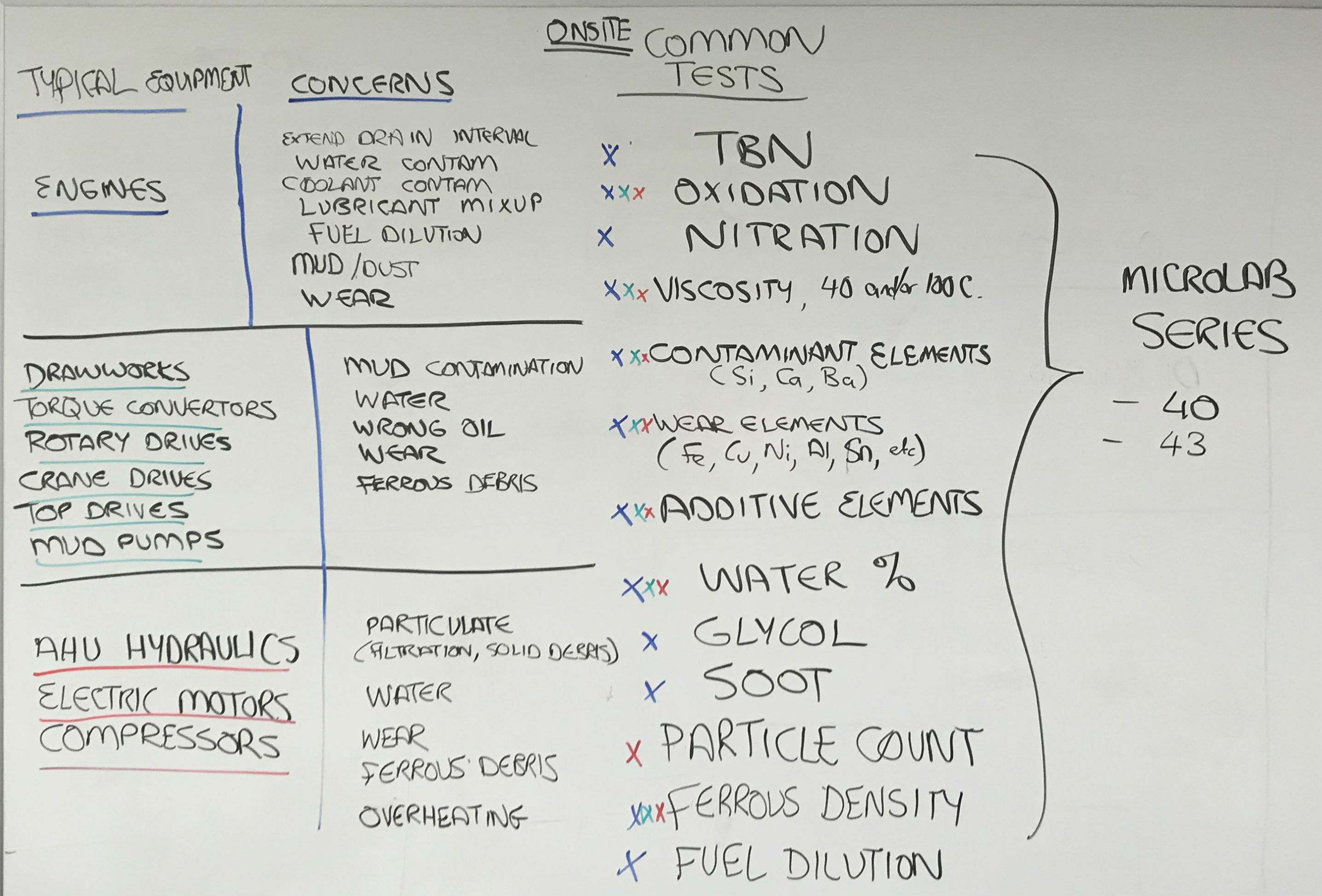 Oil and gas exploration companies have been using oil analysis for many years to lower maintenance costs, predict and prevent equipment failures, and increase uptime for drill rigs, both on land and at sea. The often remote location of such rigs and inaccessibility to commercial oil analysis laboratories make them perfect candidates for on-site oil analysis. In this edition of Ask the Expert, Dan Walsh discusses the need for on-site oil analysis and many of the benefits for exploration companies.
Oil and gas exploration companies have been using oil analysis for many years to lower maintenance costs, predict and prevent equipment failures, and increase uptime for drill rigs, both on land and at sea. The often remote location of such rigs and inaccessibility to commercial oil analysis laboratories make them perfect candidates for on-site oil analysis. In this edition of Ask the Expert, Dan Walsh discusses the need for on-site oil analysis and many of the benefits for exploration companies.
 Oil and gas rigs are pretty similar whether they are land or sea based. In each case they typically have a drill platform used to drill into the ground below to extract the buried oil or gas. The drill platform is powered by a central power plant usually comprised of one or more diesel gensets and/or AC generators. In addition to a central power plant, drill rigs have numerous gearboxes, rotary drives, hydraulics, mud pumps, clutches, torque converters and other rotating equipment lubricated with oil and grease.
Oil and gas rigs are pretty similar whether they are land or sea based. In each case they typically have a drill platform used to drill into the ground below to extract the buried oil or gas. The drill platform is powered by a central power plant usually comprised of one or more diesel gensets and/or AC generators. In addition to a central power plant, drill rigs have numerous gearboxes, rotary drives, hydraulics, mud pumps, clutches, torque converters and other rotating equipment lubricated with oil and grease.
Sea based rigs have the same equipment for drilling plus additional equipment to provide propulsion. This is typically separate from the drilling power plant.
Older rigs often have mechanical, direct-drive systems linking the power plant to the drilling unit. Newer rigs commonly use AC or SCR systems that provide more control over the speed of the drilling.
It is estimated that there are between 10,000 and 20,000 rigs in operation now worldwide. On average these rigs need the price of a barrel of oil to be >$55 in order to profitably produce oil. Some operations, like those in Saudi Arabia, have a lower break-even point.
 Why On-site Analysis?
Why On-site Analysis?
Unlike fixed factories, oil rigs are typically mobile and can move often to new oil fields either on land or sea. As such the logistics of sending samples to commercial laboratories can get difficult and often, impossible. This is one reason why on-site oil analysis is a great solution for oil and gas exploration companies.
Other reasons that on-site oil analysis works well in this industry include:
- Turnover of personnel - personnel, particularly on off-shore rigs, often rotate in and out after a few weeks. Having easy to use oil analysis equipment with clear reporting and recommended maintenance actions simplifies the process for all.
- Time for oil drain intervals - it can be quite expensive getting supplies of new oil to remote locations and disposing of used oil properly. Anything to reduce oil usage saves money.
- Cost of disrupting production - replacement parts are often hard to come by. Being able to plan shutdowns and have the proper parts available improves production.
 Logistics
Logistics
One of the nice things about having your own, on-site oil analysis is that it allows you gather copious amounts of data on your equipment, lubricants and maintenance practices. Having this information enables better decision making.
- OEM analysis. Some inferences can be made about equipment reliability and uptime, which can help your future buying decisions
- Lubricant quality
- Maintenance resource allocation - make better decisions about what spare parts to have on hand
Typical Equipment and Tests
The image below shows the three categories of equipment that are typically monitored - Engines, Rotating Equipment and Hydraulics, and what tests are important for each category.

The image outlines the main concerns with each type of equipment and which specific tests are recommended. For instance, only engines are burning fuel and being cooled by glycol, so engine testing would involve testing for fuel dilution, soot, glycol in addition to several other parameters, such as viscosity, wear elements, TBN and nitration.
 This MicroLab Series is well-suited to performing these tests in a matter of 10 minutes. The MicroLab is simple to use and produces a detailed oil analysis report with clear, actionable, maintenance recommendations. The MicroLab 43 includes the CoolCheck 2 for measuring coolant, the FDM 6000 for fuel dilution and the FerroCheck 2000 for measuring ferrous wear. This is really the ideal choice for taking care of all the equipment found on drill rigs.
This MicroLab Series is well-suited to performing these tests in a matter of 10 minutes. The MicroLab is simple to use and produces a detailed oil analysis report with clear, actionable, maintenance recommendations. The MicroLab 43 includes the CoolCheck 2 for measuring coolant, the FDM 6000 for fuel dilution and the FerroCheck 2000 for measuring ferrous wear. This is really the ideal choice for taking care of all the equipment found on drill rigs.


